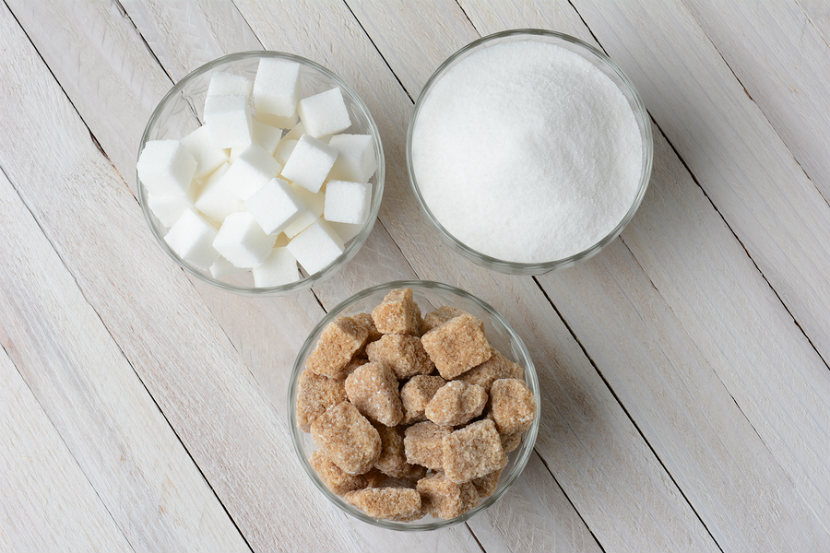
Most people enjoy the taste of something sweet. Many foods are naturally sweet. Other foods are made with sugar to add a sweet taste. Here is what you need to know about sugar and sweet foods if you have diabetes.
What is sugar?
Sugar is a type of carbohydrate. It breaks down in the body to become a source of energy called glucose. There are two categories of sugar found in foods:
-
Naturally occurring sugar - like sugar in fruit and milk
-
Added sugar - sugar added to foods like pop, baked goods, ice cream and candy
Is one type of added sugar healthier than another?
No. All types of added sugar will affect your blood glucose levels in the same way and are digested in the same way.
How much added sugar is ok?
People with diabetes can eat foods that have added sugar. But it is important to eat small amounts of these foods to help manage your blood glucose levels. If you have diabetes, up to 10 percent of the calories you eat can come from added sugar. That’s about 12.5 teaspoons or sugar (50 grams) in a 2000 calorie diet. This amount may be higher or lower than the amount that is ok for you.
Find out how much added sugar is in the foods below
|
Food
|
Sugar (teaspoons)
|
Sugar (grams)
|
|
Ketchup (1 Tbsp)
|
1
|
4 g
|
|
Coffee with sugar (2 tsp)
|
2
|
8 g
|
|
Granola bar (35 g)
|
2.5
|
10 g
|
|
Jam (1 Tbsp)
|
2.5
|
10 g
|
|
Sweetened breakfast cereal (30 g)
|
3.5
|
14 g
|
|
Chocolate bar (58 g)
|
7
|
28 g
|
|
Pop (355 mL can)
|
10
|
40 g
|
|
Blueberry muffin (168 g)
|
11
|
44 g
|
|
Jelly beans (1/4 cup)
|
11
|
44 g
|
Can I still eat fruit?
Yes. Fresh, frozen or canned fruit (packed in water or its own juices) are healthy choices. Fruit contains vitamins, minerals and fibre that are important for overall health. The naturally occurring sugar in fruit (called fructose) is not part of the 10 percent of added sugar described above.
Your dietitian can help create a meal plan that will include the amount of fruit that is right for you.
What should I look for in the ingredient list to spot added sugar?
Below are other names for added sugar. If these names are listed in the first few ingredients on a food package, the food is likely high in added sugar. Naturally occurring sugars are not listed in the ingredient list.
|
Agave Brown sugar Cane sugar or evaporated cane juice Concentrated fruit juice Corn syrup Dextrose or dextrin Fructose Galactose Glucose Glucose-fructose High fructose corn syrup
|
Honey Invert sugar Liquid sugar Maltose Maple syrup Molasses Nectar Raw sugar Sucrose Syrup White sugar
|
Hint: Ingredients ending in "ose" are likely sugars.
How do I read the Nutrition Facts Table for sugar?
The Nutrition Facts Table lists total sugars only. It does not show naturally occurring and added sugars separately.
-
Look under "Carbohydrates" to find the amount of sugar (in grams) in one serving of the food.
-
When choosing between foods, compare products and choose one with less or no added sugar.
Read Decoding the Nutrition Label: Tips for people with diabetes for more information.
Bottom line
If you enjoy sweet foods, a small amount of added sugar can be part of your diet, but it’s important to limit these foods so they do not replace healthier food choices. Your dietitian can help create a meal plan that’s right for you. Remember, diabetes is not just about sugar. All sources of carbohydrate affect blood glucose levels.
You may also be interested in
Facts on Artificial Sweeteners
Diabetes Menu Plan for Prevention and Management
Diabetes Recipe Booklets for Different Cultural Backgrounds
Recipe Makeover: Reducing Sugar in the Kitchen
Last Update – August 15, 2018